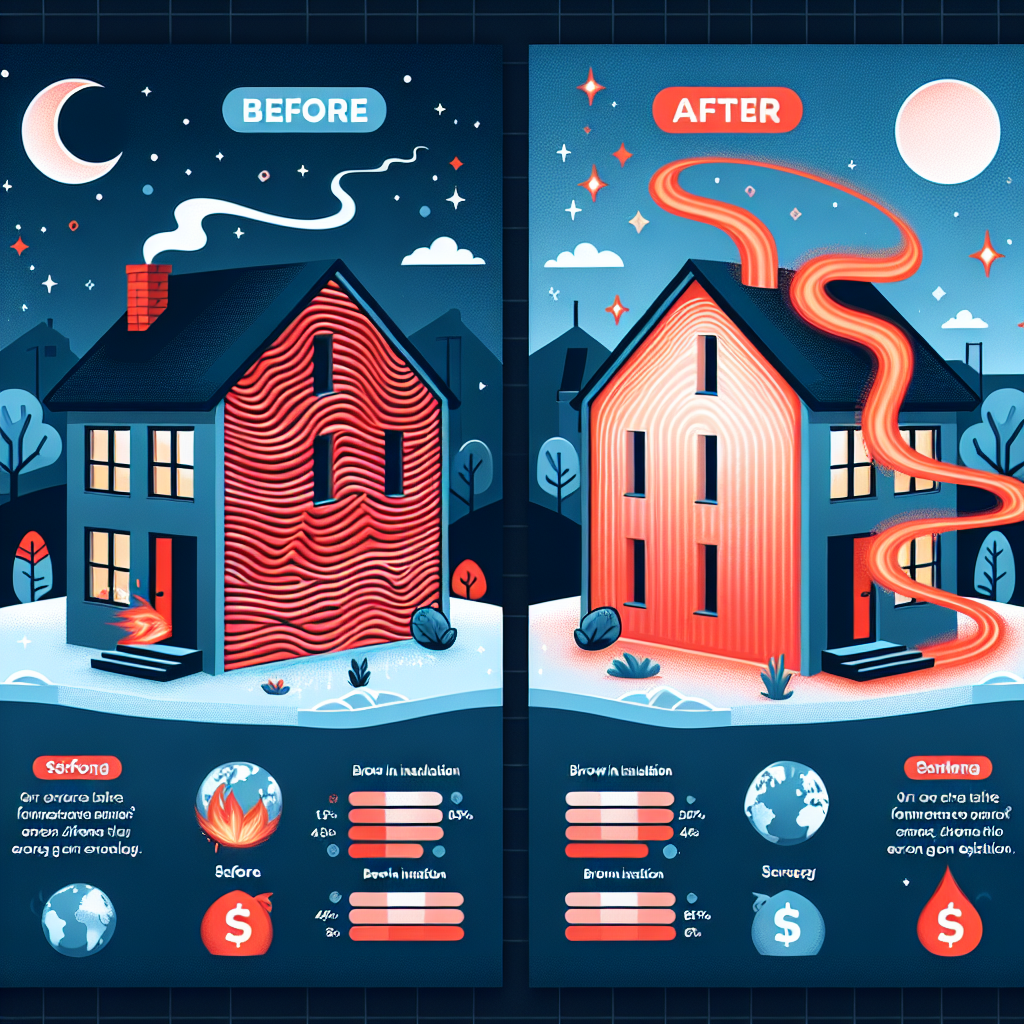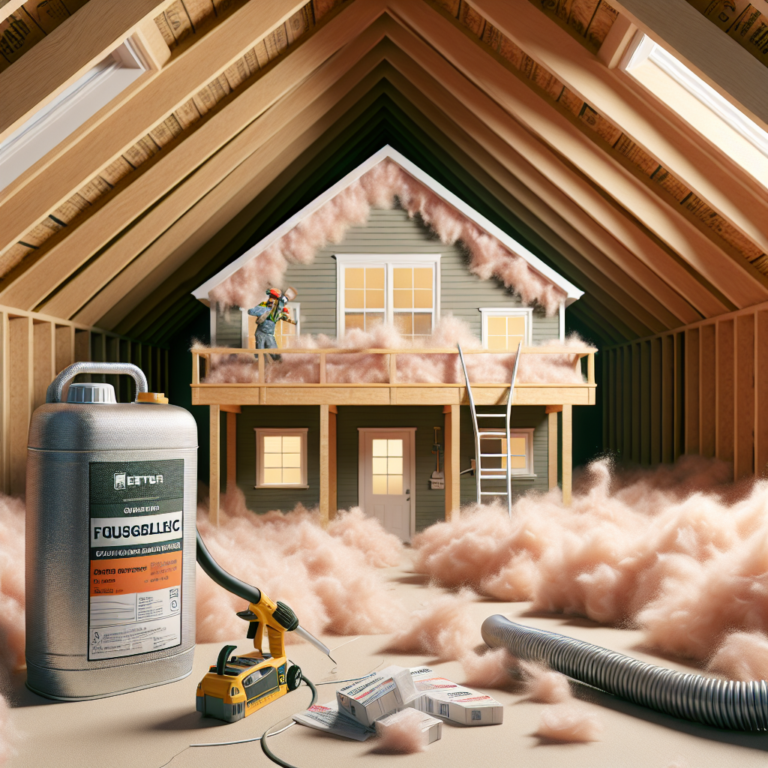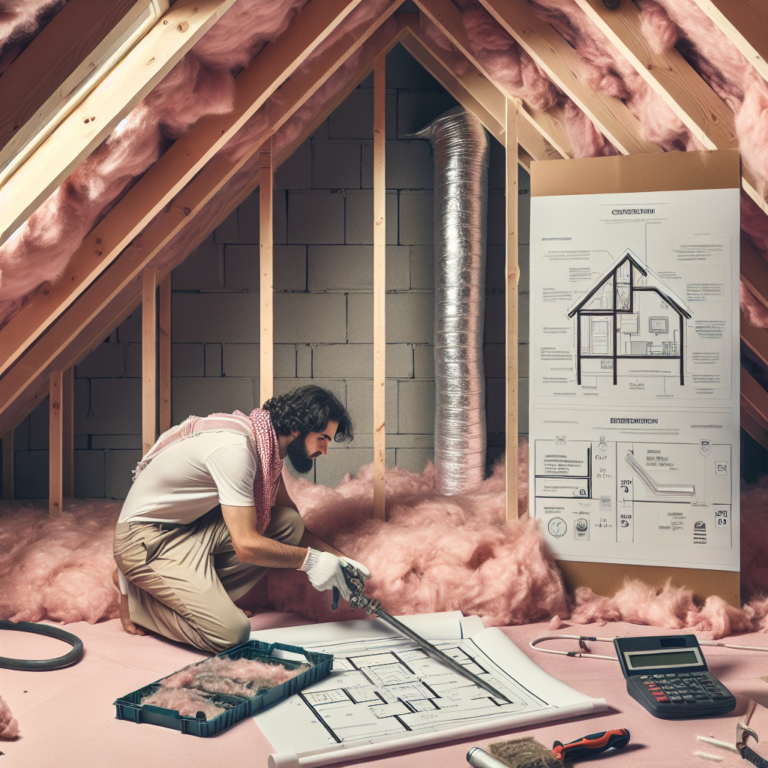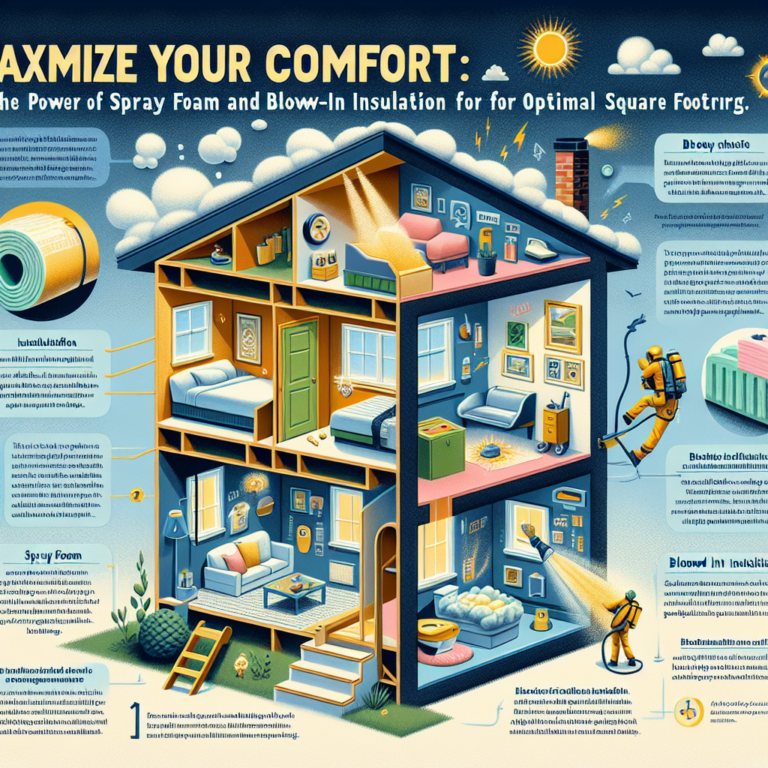-
Table of Contents
Go green and stay cozy with eco-friendly blown insulation.
Introduction
Eco-friendly blown insulation is a type of insulation material that is designed to be environmentally friendly and sustainable. It is typically made from recycled materials, such as paper, cellulose, or denim, and is used to insulate homes and buildings. This type of insulation is becoming increasingly popular due to its many benefits, including energy efficiency, cost-effectiveness, and reduced environmental impact. In this introduction, we will explore the features and advantages of eco-friendly blown insulation and why it is a great choice for both homeowners and the planet.
Benefits of Eco-Friendly Blown Insulation
Eco-friendly blown insulation is becoming increasingly popular as people become more aware of the impact of their actions on the environment. This type of insulation is made from recycled materials and is a great alternative to traditional insulation methods. Not only is it better for the environment, but it also has numerous benefits for homeowners. In this article, we will explore the benefits of eco-friendly blown insulation and why it is a smart choice for your home.
One of the main benefits of eco-friendly blown insulation is its energy efficiency. This type of insulation is made from recycled materials such as newspapers, cardboard, and denim, which are then treated with non-toxic chemicals to make them fire-resistant. This means that not only are these materials being diverted from landfills, but they are also providing excellent insulation for your home. The recycled materials are blown into the walls, floors, and ceilings of your home, creating a tight seal that prevents air from escaping. This results in a more energy-efficient home, as less energy is needed to heat or cool the space.
In addition to its energy efficiency, eco-friendly blown insulation also has soundproofing properties. The recycled materials used in this type of insulation are dense and can absorb sound waves, reducing noise pollution in your home. This is especially beneficial for those living in noisy areas or near busy roads. The insulation can also help to reduce noise transfer between rooms, making your home a more peaceful and comfortable place to live.
Another advantage of eco-friendly blown insulation is its ability to resist mold and mildew. Traditional insulation materials, such as fiberglass, can trap moisture and become a breeding ground for mold and mildew. This not only poses a health risk but can also cause damage to your home. Eco-friendly blown insulation, on the other hand, is made from materials that are naturally resistant to mold and mildew. This means that you can have peace of mind knowing that your home is protected from these harmful substances.
Furthermore, eco-friendly blown insulation is a cost-effective option for homeowners. While the initial cost may be slightly higher than traditional insulation, the long-term savings are significant. As mentioned earlier, this type of insulation is highly energy-efficient, which means that you will see a reduction in your energy bills. Additionally, because it is made from recycled materials, it is readily available and does not require extensive processing, making it more affordable in the long run.
Aside from its practical benefits, eco-friendly blown insulation also has a positive impact on the environment. By using recycled materials, this type of insulation reduces the need for new resources to be extracted and processed. This, in turn, reduces the carbon footprint and helps to conserve natural resources. Additionally, the insulation itself is recyclable, which means that it can be reused or repurposed at the end of its lifespan, further reducing waste.
In conclusion, eco-friendly blown insulation offers numerous benefits for homeowners. From its energy efficiency and soundproofing properties to its resistance to mold and mildew, this type of insulation is a smart choice for any home. Not only is it cost-effective, but it also has a positive impact on the environment. So, if you are looking to make your home more energy-efficient and environmentally friendly, consider eco-friendly blown insulation as a viable option.
Comparing the Cost Per Square Foot of Blown Insulation Options

Blown insulation is a popular choice for homeowners looking to improve the energy efficiency of their homes. It is a type of insulation that is installed by blowing loose fibers or particles into the desired space, filling in any gaps and creating a barrier against heat transfer. This method of insulation is not only effective in reducing energy costs, but it is also environmentally friendly. In this article, we will be discussing the cost per square foot of different blown insulation options, and how they compare to each other.
The first type of blown insulation we will be looking at is cellulose insulation. This type of insulation is made from recycled paper products, making it a sustainable and eco-friendly option. The cost per square foot of cellulose insulation is relatively low, making it an attractive choice for budget-conscious homeowners. On average, cellulose insulation costs between $0.50 to $1.50 per square foot, depending on the thickness and density of the insulation.
Another popular option for blown insulation is fiberglass. This type of insulation is made from tiny glass fibers and is known for its effectiveness in reducing heat transfer. The cost per square foot of fiberglass insulation is slightly higher than cellulose, ranging from $0.75 to $2.00 per square foot. However, it is still a cost-effective option for homeowners looking to improve their home’s energy efficiency.
One of the newer options in the market is soy-based foam insulation. This type of insulation is made from soybean oil and is considered to be a more environmentally friendly alternative to traditional foam insulation. The cost per square foot of soy-based foam insulation is higher than cellulose and fiberglass, ranging from $1.50 to $3.00 per square foot. However, it is known for its superior insulating properties and can provide long-term savings on energy costs.
While the initial cost of blown insulation may seem higher than other types of insulation, it is important to consider the long-term benefits. Blown insulation is known for its durability and can last for decades without needing to be replaced. This means that homeowners can save on energy costs for years to come, making it a worthwhile investment.
In addition to the cost per square foot, it is also important to consider the installation process and any additional costs that may be associated with it. Cellulose insulation, for example, requires a special machine to be blown into the desired space, which may incur additional rental fees. On the other hand, fiberglass insulation can be installed using a DIY approach, making it a more cost-effective option for those who are handy with tools.
When comparing the cost per square foot of different blown insulation options, it is also important to consider the R-value. The R-value measures the insulation’s ability to resist heat transfer, with a higher R-value indicating better insulation. Cellulose insulation has an R-value of 3.2 to 3.8 per inch, while fiberglass has an R-value of 2.2 to 2.7 per inch. Soy-based foam insulation, on the other hand, has an impressive R-value of 6.0 per inch, making it the most effective option in terms of insulation.
In conclusion, blown insulation is a cost-effective and eco-friendly option for homeowners looking to improve their home’s energy efficiency. While the cost per square foot may vary depending on the type of insulation chosen, it is important to consider the long-term benefits and savings on energy costs. Whether you opt for cellulose, fiberglass, or soy-based foam insulation, all three options provide effective insulation and contribute to a more sustainable future.
How to Choose the Right Eco-Friendly Blown Insulation for Your Home
When it comes to insulating your home, there are many options available on the market. However, with the increasing concern for the environment, more and more homeowners are looking for eco-friendly solutions. One popular choice is blown insulation, which is made from recycled materials and can significantly reduce energy consumption in your home. But with so many options to choose from, how do you know which eco-friendly blown insulation is right for your home? In this article, we will discuss the different types of eco-friendly blown insulation and how to choose the right one for your home.
Firstly, it is essential to understand what blown insulation is and how it works. Blown insulation is a type of insulation that is installed by blowing or spraying it into the desired area. It is typically made from recycled materials such as cellulose, fiberglass, or mineral wool. The insulation is blown into the walls, attic, or other spaces, creating a barrier that helps to keep the heat inside during the winter and outside during the summer. This results in a more energy-efficient home and can lead to significant cost savings on your energy bills.
One of the most popular types of eco-friendly blown insulation is cellulose insulation. It is made from recycled paper products, such as newspapers, and is treated with fire-retardant chemicals to make it safe for use in homes. Cellulose insulation is an excellent choice for those looking for a cost-effective and environmentally friendly option. It has a high R-value, which measures the insulation’s ability to resist heat flow, making it an efficient choice for insulation.
Another option for eco-friendly blown insulation is fiberglass insulation. It is made from recycled glass and sand and is one of the most commonly used types of insulation. Fiberglass insulation is known for its durability and effectiveness in reducing energy consumption. It is also resistant to moisture, mold, and pests, making it a long-lasting option for your home. However, it is essential to note that fiberglass insulation can be irritating to the skin and lungs, so proper protective gear should be worn during installation.
Mineral wool insulation is another eco-friendly option for blown insulation. It is made from recycled slag and rock, making it a sustainable choice for homeowners. Mineral wool insulation is known for its excellent soundproofing capabilities and is also fire-resistant. It is a bit more expensive than other types of blown insulation, but its durability and effectiveness make it a worthwhile investment.
When choosing the right eco-friendly blown insulation for your home, there are a few factors to consider. Firstly, you should determine the R-value that is needed for your home. The R-value will depend on your climate and the area of your home that needs to be insulated. You can consult with a professional to determine the appropriate R-value for your home.
Another factor to consider is the installation process. While blown insulation can be a DIY project, it is recommended to hire a professional for proper installation. They have the necessary equipment and expertise to ensure that the insulation is evenly distributed and effectively covering all areas.
Lastly, consider the cost and the long-term benefits of the insulation. While eco-friendly blown insulation may have a higher upfront cost, it can lead to significant savings on your energy bills in the long run. It is also a more sustainable option for the environment, making it a worthwhile investment.
In conclusion, choosing the right eco-friendly blown insulation for your home is crucial for both the environment and your wallet. Consider the different types of insulation available, the R-value needed, and the installation process before making a decision. With the right insulation, you can create a more energy-efficient and sustainable home for you and your family.
Q&A
1) What is eco-friendly blown insulation?
Eco-friendly blown insulation is a type of insulation material that is made from natural and sustainable materials, such as recycled paper, cotton, or cellulose fibers. It is used to insulate homes and buildings, providing thermal resistance and reducing energy consumption.
2) How does eco-friendly blown insulation benefit the environment?
Eco-friendly blown insulation helps reduce the amount of energy needed to heat and cool buildings, which in turn reduces carbon emissions and helps combat climate change. It also uses natural and sustainable materials, reducing the need for non-renewable resources and minimizing waste.
3) Is eco-friendly blown insulation as effective as traditional insulation materials?
Yes, eco-friendly blown insulation can be just as effective as traditional insulation materials, such as fiberglass or foam. It provides similar levels of thermal resistance and can help reduce energy costs. Additionally, it is often more affordable and easier to install, making it a practical choice for many homeowners and builders.
Conclusion
In conclusion, eco-friendly blown insulation is a sustainable and environmentally friendly option for insulating homes and buildings. It is made from recycled materials and does not release harmful chemicals into the environment. Additionally, it can help reduce energy consumption and lower utility bills. By choosing eco-friendly blown insulation, we can contribute to a healthier planet and create a more sustainable future.




